
Related
Topics
In Haiti, UN troops launched a pre-dawn raid on Cite Soleil, one of the most economically-depressed neighborhoods of Port au Prince. Local residents say it might have been the deadliest attack carried out by UN troops since they were stationed in the country last year. [includes rush transcript]
On Saturday hundreds of Haitians gatherer for the funeral of Emmanuel “Dread” Wilme — a popular community leader who lives in Cite Soleil, one of the most economically-depressed neighborhoods of Port au Prince. Wilme was killed last Wednesday when UN troops attacked the neighborhood in a pre-dawn raid.
Although the raid has received little attention, local residents say it might have been the deadliest attack carried out by UN troops since they were stationed in the country last year.
According to residents the UN troops entered the area at about three in the morning and opened fire. Eyewitnesses reported the UN troops used helicopters, tanks, machine guns and tear gas in the operation. The UN has admitted that its troops killed at least five people. UN military spokesman Colonel Elouafi Boulbars told Agence France Presse, “The bandits tried to fight our men. They suffered serious losses and we found five bodies in what was left of a house.” Local residents put the figure at no less than 20. Some estimates are even higher. Witnesses said innocent civilians were among the victims.
- Witnesses in Cite Soleil describe the UN raid.
Another local resident lost her husband in the raid. She described what happened on Wednesday.
- Cite Soleil resident describes her husband’s death.
The United Nations has defended the operation by describing it as a necessary move to wipe out violent gang activity. Both the United Nations and the interim Haitian government have described the slain Dread Wilme as one of the country’s top gang leaders. Cite Soleil is comprised largely of supporters of the Lavalas Party and ousted Haitian president Jean Bertrand Aristide who was overthrown in a U.S.-backed coup 18 months ago. To local residents Dread Wilme was a community leader and the attacks were seen as politically motivated.
- Cite Soleil residents talk about Emmanuel “Dread” Wilme.
We are joined in our studio by Seth Donnelly. He visited Cite Soleil hours after the killings and interviewed survivors. On Saturday he attended Dread Wilme’s funeral. Seth Donnelly was in Haiti as part of a human rights delegation sponsored by the San Francisco Labor Council.
- Seth Donnelly, Haiti Action.
Transcript
AMY GOODMAN: Witnesses said innocent civilians were among the victims.
RESIDENT OF CITE SOLEIL: A lot of innocent civilians were killed and there are even some people that they kill and just take them with them. One of the worst things that happened is that they killed like a mom with two of her children, and they are still — the bodies are still there.
AMY GOODMAN: Another local resident lost her husband in the raid. She described what happened on Wednesday.
RESIDENT OF CITE SOLEIL: I’m working at night, so when I was back in the morning, so at noon when I was back from my work, I found him just in his blood. He was the only one here. And my three children are in the countryside because I have them in countryside. And he is a very old guy. So they just get inside and pulled him out under the bed and killed him.
AMY GOODMAN: The United Nations has defended the operation by describing it as a necessary move to wipe out violent gang activity. Both the United Nations and the interim Haitian government have described the slain Dread Wilme as one of the countries top gang leaders. Cite Soleil is comprised largely of supporters of Lavalas and ousted Haitian President Jean-Bertrand Aristide overthrown in the coup 18 months ago, February 29, 2004, the President, Aristide, has described as a U.S.-supported coup. He said he was kidnapped in the service of a coup backed by the United States. To local residents, Dread Wilme of Cite Soleil was a community leader. The attacks were seen as politically motivated.
RESIDENT OF CITE SOLEIL: So Dread Wilme grew up with us. So, Dread Wilme is one of the guys who grow up in the community and who wanted to work for peace, who wanted to have, like, an improvement for the community, and he had, like — he had developed a good relationship with all the people in the neighborhood as a professional. So Dread Wilme was a protector for us; he was like our dad. So they keep saying that Dread Wilme was like a gang and he was involved in the killings, but we never see this. We in the community, we have seen him as a peaceful guy but never as someone who was involved in killings of people. So, we want to say thank you to [inaudible] because he was the one who make this happen.
AMY GOODMAN: We are now joined in our studio by Seth Donnelly, who went to Cite Soleil a day after the killings last Wednesday. He interviewed survivors. On Saturday, he attended Dread Wilme’s funeral. Seth Donnelly was in Haiti as part of a human rights delegation that was sponsored by the San Francisco Labor Council. We welcome you to Democracy Now!
SETH DONNELLY: It is good to be here. Thank you, Amy.
AMY GOODMAN: Well, talk about what you learned, what you understand happened, what is the U.N.’s version of events. We tried to get the U.N. on. They did not respond to our calls.
SETH DONNELLY: Yeah. I’d like to start with the official version, and then we’ll look at what the evidence of the massacre that contradicts the official version. I interviewed the top military command of the U.N. on Friday, July 8, with some Haitian colleagues, human rights workers. And Lieutenant General Augusto Heleno and Colonel Morano claimed that the operation was a success. They did state that about 300 U.N. troops led by a Jordanian contingent, surrounded Cite Soleil, which as you mentioned is one of the largest ghettos in Port-au-Prince. It’s one of the poorest neighborhoods in the world. And it has, even before this operation, it has been sealed off. According to locals, the U.N. had put shipping freight containers blocking various entrances into the community because it’s been a hotbed of support for President Aristide. It is a Lavalas base of support, and there has been ongoing conflicts with U.N. and police in that community. So, the community was already relatively sealed off. But then the 300 troops came around 3:00 a.m. July 6, and then also according to U.N. high military command, they had 18 to 20 armed personal–armored personal carriers, which are basically like tanks without treads. They have cannons. And they had those choking off entrances and exits to and from the ghetto.
And then around 5:00 a.m., they launched the attack. They tried to locate Dread Wilme and capture him. They claimed he was killed. The community is acknowledging that he was killed. But the top level military command said they were unaware of any civilian casualties during the operation. So that was sort of — and they also mentioned that there was a helicopter that flew 3,000 feet overhead just for observation purposes, but it did not shoot down into the community.
What we found actually when we went into the community the day after the operation was widespread evidence that the troops had carried out a massacre. We found homes, which when we say homes, we are talking basically shacks of wood and tin, in many cases, riddled with machine gun blasts as well as tank fire. The holes in a lot of these homes were too large just to be bullets. They must have been tank-type shells penetrating the homes. We saw a church and a school completely riddled with machine gun blasts. And then the community came out.
Once we had passed through, and we were — the community understood who we were, women, children, old and young, came out en masse and started to give us their testimony. They clearly were not being coerced by (quote/unquote) “gang leaders” or “gang elements.” They took us into their homes. They showed us bodies that still remained. They gave us very emotional testimony. People were hysterical still. And they all claimed that the U.N. forces had fired into their homes, had fired into their community, and people were saying at a minimum 20, if not more, people were killed.
Then there’s a Haitian human rights worker who was actually on the scene when the operation occurred and has video footage that unfortunately we cannot yet release, but there is a plan at some point for that to be released to the public, that shows people being killed during the operation quite graphically.
Thirdly, we went to the local hospital that serves people from Cite Soleil. There’s one hospital in Port-au-Prince, it’s Medicine Without Borders, that doesn’t charge a fee so very poor people can go to that hospital. And we asked them if they would share with us their records, which they did. And we got the impression that nobody from the U.N. had spoken to them. Perhaps they did but we felt like we were the first human rights workers making contact with the hospital after the operation. And sure enough, their records show an influx of civilian casualties. Starting at 11:00 a.m July 6, there is 26 people alone from Cite Soleil that came in suffering mostly from gunshot wounds. Out of that 26, 20 were women and children. One pregnant woman lost her child. And 50% of those 26 people had serious gunshot wounds to the stomach and had to go into major surgery right away.
Now, if the U.N. was committed to finding out the (quote/unquote) “collateral damage” of their operation, they would simply need to make a phone call or do what we did, which was to go to the one hospital in Port-au-Prince that serves the people of Cite Soleil or they could have spoken to the Red Cross in Cite Soleil, which admitted that they had transported 15 people out of there on tap-taps into the hospital. So the other —
AMY GOODMAN: Those are local buses? Local buses, tap-taps?
SETH DONNELLY: Yes.
AMY GOODMAN: What did the U.N. military commander say when you were questioning him about your — the eyewitness accounts that you heard?
SETH DONNELLY: Well, the Lieutenant General Augusto Heleno initially challenged us, our delegation, as to why were we concerned about the rights of the (quote/unquote) “outlaws,” the term that he used, and not the (quote/unquote) “legal force.” He seemed to write off community testimony as being part of community hostility and part of these (quote/unquote) “gang attacks” on U.N. forces. In that sense, I felt like he was sort of — the subtext of what he was saying was that the community itself was an outlaw community, that the gang would presumably include all of these folks that came out to talk to us. Another — the other military commander present suggested that some of the bodies that were shown to us were actually killed by (quote/unquote) “gangs,” and that we should try to have ballistics tests done on the bodies. I would be all for having ballistics tests done on those bodies, as well as getting more comprehensive forensic evidence from medical professionals.
AMY GOODMAN: Seth, you were also at the funeral of Dread Wilme on Saturday. Fears that there would be another U.N. attack?
SETH DONNELLY: Yeah. Hundreds turned out. Inside of Cite Soleil, I kept feeling like we were — it was sort of like a South African township during the apartheid days, cut off. And hundreds of people came out for this funeral. The way the community spoke about Dread Wilme — again, not just youth who, you know, often worked with Dread Wilme, but also the entire community, women and children, referred to him as a father figure or a protector. But there was twice during this funeral service where a rumor hit the crowd that U.N. troops were coming back. There was U.N. — some APCs in the distance in Cite Soleil holding off checkpoints. And twice the rumor hit that they were about to roll on the crowd, and people fled in terror, including myself. It was a stampede running with the crowd, because you didn’t know what was going to happen. That also was an indicator that something was very — when you have hundreds of people fleeing in terror, it would indicate that something very wrong happened on July 6.
AMY GOODMAN: You’re saying a lot of the eyewitnesses saw this as a political attack, Cite Soleil, long seen as a stronghold —
SETH DONNELLY: Oh, absolutely, the community is highly politicized, it is highly — the community views itself locked in a long-term struggle for the restoration of President Aristide and for the removal of occupation forces from Haiti, and it views — people view these attacks as part of the ongoing post-coup war on the poor majority that is occurring in Haiti, which, by the way, our delegation outside of this event in Cite Soleil found comprehensive evidence of an ongoing war on the poor majority on different levels that is being conducted by the coup regime itself, the interim government of Latortue
AMY GOODMAN: In other news from Haiti, paramilitary leader, Guy Philippe announced last week he plans to run in the upcoming Haitian presidential elections. Last year, he played a key role in the ouster of Jean-Bertrand Aristide, the president. Philippe, a former police chief who was trained by U.S. special forces in Ecuador in the late 1990s, involved with and has been accused of the masterminding of deadly attacks in Haiti. We’re talking to Seth Donnelly. Last comments, Seth, as we wrap up right now about the significance of what happened in Cite Soleil last Wednesday.
SETH DONNELLY: Right, I certainly want to say that it’s one thing to describe this in words, but when a person actually enters Cite Soleil, and you see the open sewage streams, you see the shacks that — how people are living, and then you think about 18 to 20 armored personnel carriers with tank-type cannons and you think about 300 troops with machine guns and a helicopter, by the way, which community people are saying fired down on them, and we did see what appears to be bullet holes in the roofs. It seems to me that this really was a Warsaw Ghetto-type attack on an impoverished community. And I do think this is emblematic of the ongoing war on the poor majority that is occurring in Haiti today, and it requires people in the United States to stand in solidarity with the people of Cite Soleil.
AMY GOODMAN: The U.S. has not sent military weapons to Haiti under the democratically elected Jean-Bertrand Aristide, but was documented sending hundreds, if not a thousand rifles under the leadership, if you could call it that, of Latortue.
SETH DONNELLY: Sure, and then they froze aid to Aristide, but now the Latortue government is, you know, receiving all sorts of money from the U.S. Then you have the — you have the issue with what is the U.N. role here. The U.N. role, they’re in all of the very — they’re in fancy bourgeois hotels. They drive around in these fancy SUVs. they have resources but I don’t see schools being built. I think it could arguably be stated that Cuban doctors sent by the Cuban government have done more for the people of Haiti than the entire administer of the U.N. mission in Haiti since the coup.
AMY GOODMAN: Well, I want to thank you very much for being with us, Seth Donnelly a member of the U.S. labor human rights delegation who has just returned from Haiti, reporting to us on what happened last Wednesday, a pre-raid dawn by U.N. forces in a very poor area of Port-au-Prince, the capital of Haiti, Cite Soleil, long seen as a Lavalas stronghold, stronghold of the supporters of the democratically-elected president, Jean-Bertrand Aristide. It looks like at least 20 dead, according to the reports on the ground.
SETH DONNELLY: Estimates from the community are getting much higher. Yeah. The person who was on the scene has given the estimate of 30, at least 25 confirmed dead as he sees it.
AMY GOODMAN: I want to thank you very much, Seth, as we wrap up the show. Thank you.

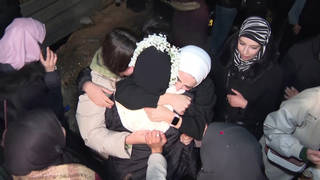
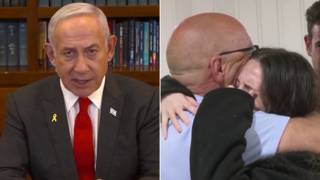
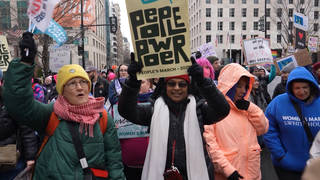
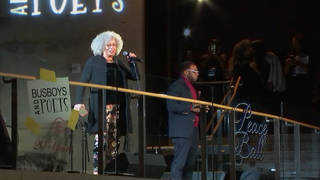
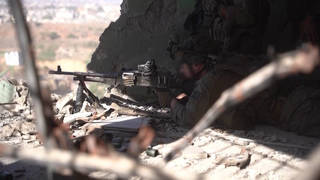




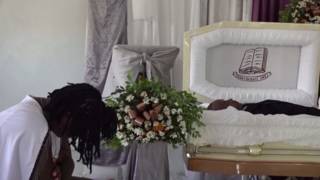
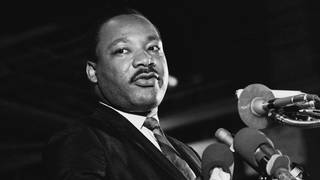
Media Options